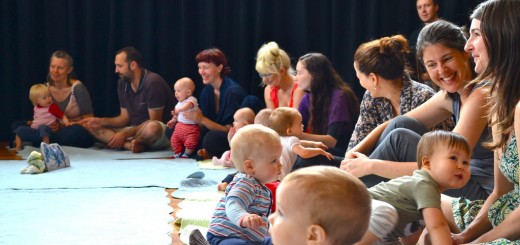5 Tips for Toddler Sleep Training
You know you’ve been there. Your toddler is running out of his room, making demands, and you will do anything — really anything — to get him to go to sleep. Another round of Old McDonald, Twinkle Twinkle while rubbing his back, one more book, one more iPad video… and of course we can’t forget the snacks. If bedtime has become more like a carnival game of whac a’mole rather than a soothing wind down, maybe it’s time you took control once more (or maybe for the first time) and make bedtime work on your terms. Toddler sleep training sound impossible? It’s not! With a little creativity, constancy, and confidence, you can absolutely turn it around. Here’s how:
1. Make sure your sleeper has the right bedtime. Your toddler might need a good 5 to 6 hours between naptime and bedtime. If your little one is no longer napping, then it is key that he or she is going to bed early enough to avoid the overtired crazy irrational meltdown scenario. You might want to use a toddler alarm clock and set the bunny for a good sleep time and an appropriate wake time. Make sure you choose times that are realistic for your child. If your sleeper rarely makes it to 6:30, then set it for 6:20, so she can wake and feel proud that she made it all night.
2. Create a routine that has clear start, middle, and end — and make sure that this routine happens in under 20-30 minutes. Bedtime should not take longer than a Broadway show. I like bath time, two books in the chair, one book and/or one song in the bed (if that works), and a hug and a kiss.
3. Prepare a bedtime basket for your toddler. If your little boy wants his Thomas the Tank train, then put it in the basket. A cup of water? No problem: into the basket. Whatever random toy or object he’s fixated on, no problem! If it’s safe, put it in the basket.
4. Set up a gate. A gate (like this one) keeps your toddler in her room and keeps her safe. It also ends the epically stimulating game of “run out of the room, get put back by mommy or daddy.” Once the gate is closed, you only go back in if your toddler is showing positive and constructive signs of being ready to get back into bed and go to sleep. Do your best not to engage in negative behavior. If she is reading every book on her shelf, don’t engage. Turn the shelf around the next day and put books in the bedtime basket. Honestly, the more you can ignore, the better.
5. Make a clear treasure chest for your sleeper. It should have a tight lid and be impossible for your child to open. Fill it with prizes and treats, and keep it in sight. Set it up during the day, show it to her (and even let her hold it!), and explain that if she stays in her room and goes to bed quietly and peacefully, then she can choose one prize from the treasure box in the morning. Encourage her to show friends, grandparents, baby sitters. After a good night, let her choose the prize. If the night is bad, don’t threaten at bedtime, the next day, keep the treasure chest out of reach, and explain that she gets another chance tonight.
Stay on track, and you will be in a much better place in a few days.
Brooke Nalle, MS Ed., is the founder of Sleepy on Hudson, a pediatric sleep consultancy specializing in developmentally appropriate sleep solutions for families. A graduate of Bank Street College of Education, Brooke uses the developmental interactive approach to determine each child’s best path to better sleep based on his or her respective cognitive, physical, and emotional needs. Her plans support the parenting style and culture of the family as well. She works privately with families and offers group workshops at the Seleni Institute. She has three children: Alistair, 10, Clara, 8, and Loewy, 5.





One thing that worked well with my 2 year old daughter….when she would get out of bed, I would pick her up, give her a kiss and put her back in her bed…the key… without saying a word. The first night, it happened several times, the second night a handful of times, and for the most part, she now stays in her bed.
..and what is one doing with that bedtime basket? Does it have a purpose beyond being a touchstone of the bedtime process? Thanks.
We happened to get Dr. Marc Weissbluth for our first child’s peditrician. He was adamant on two things parents needed to do to get thier toddler to sleep well – make bedtime early rather than later and no interaction.
It was a tough first two days as she cried herself to sleep – I had to leave the apartment and have my husband stand watch because I wanted to pick her up SO much. But after that, it was a godsend.
She’d go to bed at 6:30, asleep by 6:45, and wake up between 6 and 7am. With our son, we had to deal with some baby heartburn issues that made it tough for him to sleep, but once we did he was able to sleep well following the general rules as well.
So I can attest, these tips will help. Just remember you are doing it for your child so they can sleep well.